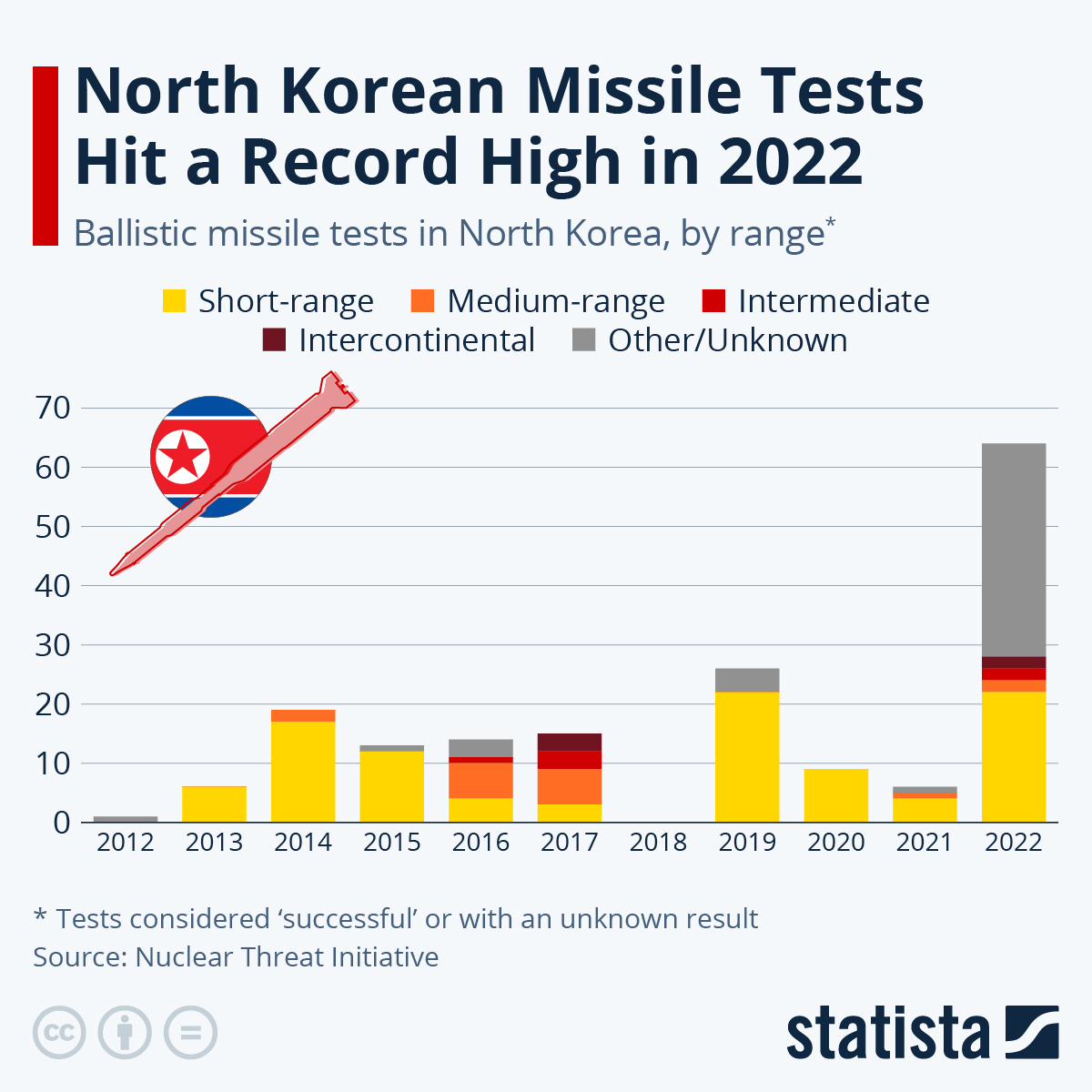As this infographic shows, North Korean missile tests have intensified in 2022 and were already at a record high by June. As the data from the Nuclear Threat Initiative shows, posturing from North Korea has been on the rise again after a test-less 2018. In 2018 and early 2019, two summits between North Korean leader Kim Jong-un and U.S. President Trump brought tests to a halt, but eventually rendered no concrete results as rhetoric between the two nations grew heated again quickly.
2019 ended up seeing as many missile tests as 2017, when North Korea's demonstration of its ability to reach the U.S. with its missiles led to a diplomatic crisis. Intercontinental or even intermediate missile tests were not witnessed from 2018 to 2021, but there has already been one successful test of each this year so far.

No comments:
Post a Comment